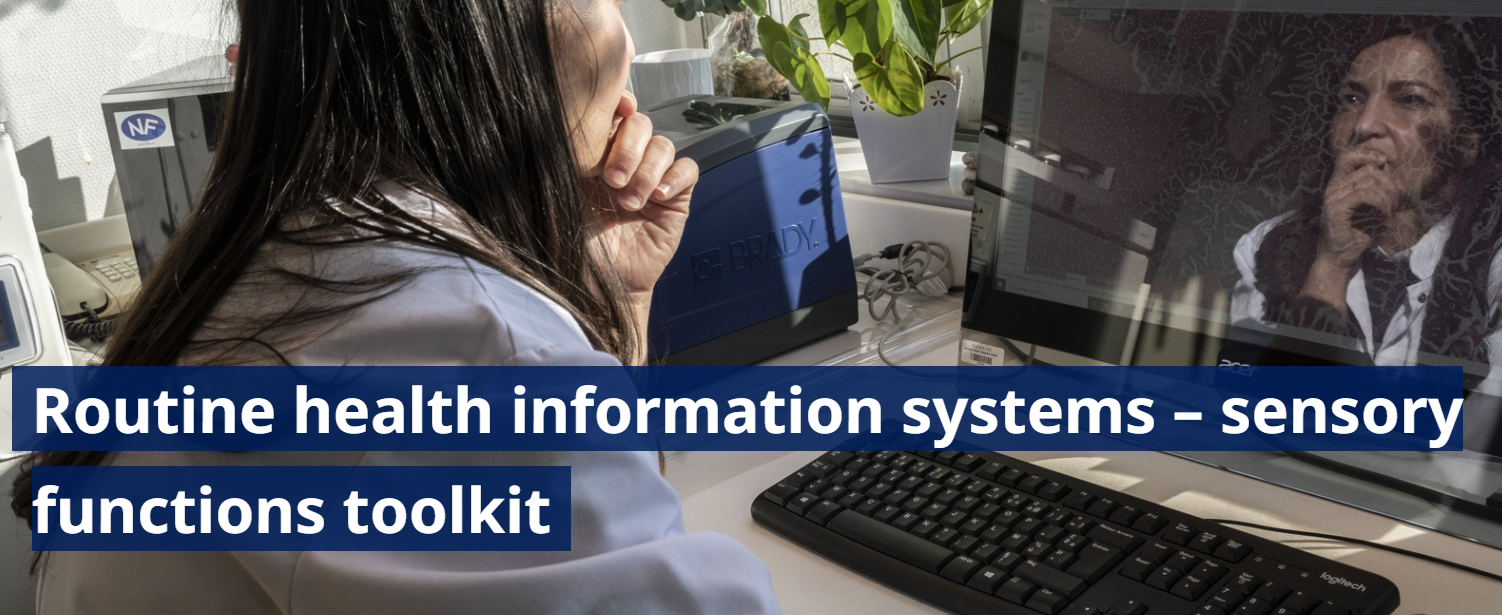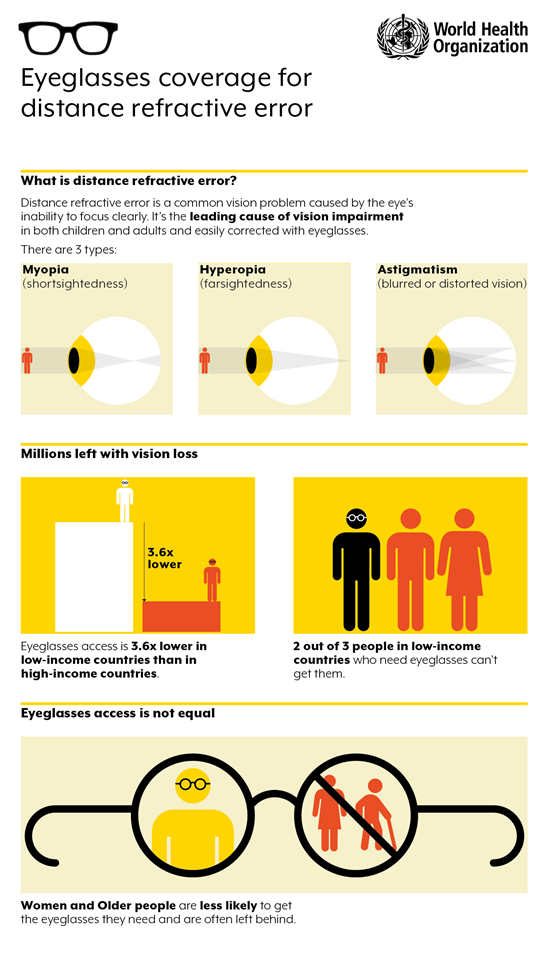
SPECS normative work
Relevant SPECS 2030 resources
WHO, through consultation with experts in the field of eye care, has undertaken a range of activities and developed guidance documents to support countries to strengthen their health systems to better deliver refractive error services, and eye care services more generally.
Some of the activities and guidance, particularly related to the objectives of the SPECS 2030 initiative, are presented below. The development of additional guidance to support countries in strengthening their refractive error services is ongoing.
Planning
RESAT is a questionnaire-based qualitative assessment tool developed by WHO to evaluate the current status of services that address refractive error...
Package of eye care interventions
The package of eye care interventions (PECI) provides a set of evidenced-based eye care interventions across the continuum of care and the material resources...

Human resources development
Competency-based refractive error teams
The Competency-based refractive error teams (CRET) tool, developed by the World Health Organization (WHO), is a practical resource designed to support...
Monitoring and evaluation
Report of the 2030 targets on effective coverage of eye care
The Report of the 2030 targets on effective coverage of eye care intends to serve as a reference point to commence monitoring progress towards the 2030...
Guidance on the analysis and use of routine health information systems: eye and ear care module
The collection of routine data for eye and ear care from health facility reporting underpins health related decision-making in health policy, management...

Routine health information systems – sensory functions toolkit
Service delivery
The Summary guide on quality standards for spectacles simplifies global quality standards and provides practical guidance on best practices for dispensing...
Unaddressed sensory impairments have far-reaching impacts on the lives of thoseaffected and their families. In children, sensory inputs from both vision...
Vision and eye screening implementation handbook
The WHO Vision and eye screening implementation handbook (VESIH) offers a step-by-step guidance for conducting vision and eye screenings in community and...

Summary: Approaches for delivery of refractive and optical care services in community and primary care...
This Cochrane systematic review evaluated existing methods utilized globally for delivering refractive and optical care services within community and primary...
Health promotion
Myopia represents an important public health issue in the 21st century, affecting an estimated 2.6 billion people in 2020. Education campaigns play a vital...
Related health topic

.png?sfvrsn=a7ee3e87_4)

/countries/sri-lanka/whoeyes_sm-tiles_sea.jpg?sfvrsn=821632de_2)